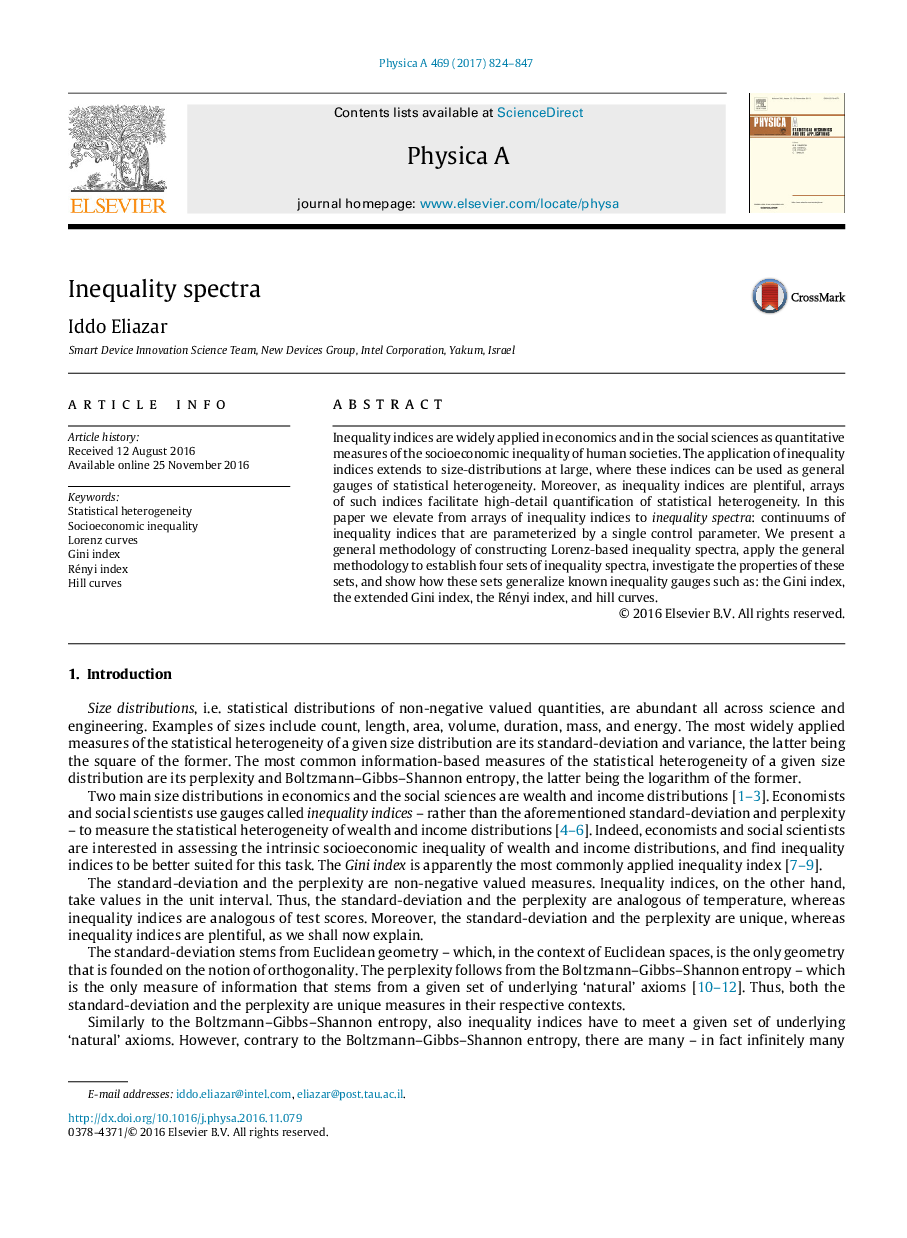| Article ID | Journal | Published Year | Pages | File Type |
|---|---|---|---|---|
| 5103353 | Physica A: Statistical Mechanics and its Applications | 2017 | 24 Pages |
Abstract
Inequality indices are widely applied in economics and in the social sciences as quantitative measures of the socioeconomic inequality of human societies. The application of inequality indices extends to size-distributions at large, where these indices can be used as general gauges of statistical heterogeneity. Moreover, as inequality indices are plentiful, arrays of such indices facilitate high-detail quantification of statistical heterogeneity. In this paper we elevate from arrays of inequality indices to inequality spectra: continuums of inequality indices that are parameterized by a single control parameter. We present a general methodology of constructing Lorenz-based inequality spectra, apply the general methodology to establish four sets of inequality spectra, investigate the properties of these sets, and show how these sets generalize known inequality gauges such as: the Gini index, the extended Gini index, the Rényi index, and hill curves.
Related Topics
Physical Sciences and Engineering
Mathematics
Mathematical Physics
Authors
Iddo Eliazar,
